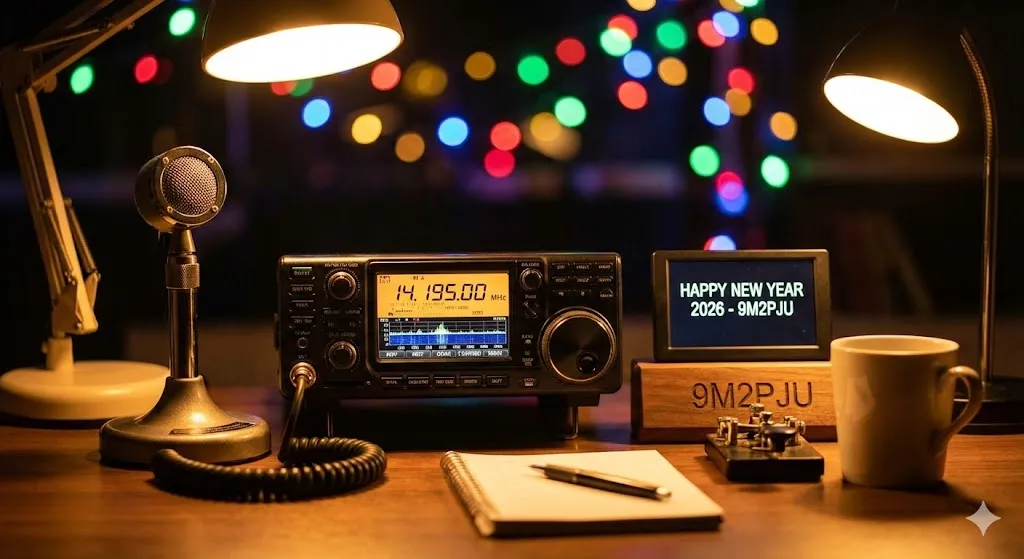Exploring the World of Amateur Radio QRP Operation in CW Mode
Introduction
Amateur radio, also known as ham radio, is a fascinating hobby that allows enthusiasts to communicate with others across the globe using various modes of transmission. One popular aspect of amateur radio is QRP operation, which refers to low-power communication. When combined with the use of Morse code (CW), QRP operation becomes an exciting and challenging endeavor. In this blog post, we will delve into the world of amateur radio QRP operation in CW mode, exploring its benefits, techniques, and the sense of adventure it brings.
Understanding QRP Operation
QRP operation involves transmitting at low power levels, typically 5 watts or less. The term “QRP” originates from the Q-code used in radio communication, where “QRP” signifies “reduce power.” Despite the lower power output, QRP enthusiasts can achieve remarkable results by employing efficient antennas, using optimal operating conditions, and relying on the inherent advantages of CW mode.
Benefits of QRP Operation in CW Mode
1. Accessibility: QRP operation in CW mode allows radio amateurs to communicate effectively using minimal equipment. With a simple setup, low power, and Morse code proficiency, operators can establish contacts over long distances, even under challenging conditions.
2. Efficiency: CW mode is known for its efficiency in low signal-to-noise ratio environments. By utilizing the human ear’s excellent ability to decode and interpret Morse code signals, QRP operators can communicate effectively even when other modes struggle.
3. Enhanced Propagation: QRP operation in CW mode takes advantage of the natural characteristics of Morse code signals. The narrow bandwidth of CW transmissions contributes to increased signal strength and improved reception in difficult propagation conditions, making it an ideal mode for long-distance communication.
4. Minimal Equipment: QRP operation encourages minimalism and resourcefulness. Amateur radio enthusiasts often design and build their equipment, including compact transceivers, lightweight antennas, and portable power sources. This aspect of QRP operation adds a unique charm to the hobby and fosters creativity among operators.
Techniques for Successful QRP Operation in CW Mode
1. Effective Antennas: Due to the lower power output, choosing efficient antennas is crucial for QRP operation. Wire antennas, such as dipoles or end-fed wires, are popular among QRP operators for their simplicity and effectiveness. Portable vertical antennas, such as the popular “Buddipole,” provide versatility and ease of deployment for portable operations.
2. Skillful Operating: Developing proficiency in Morse code is a fundamental requirement for successful QRP operation in CW mode. Regular practice and improvement in code proficiency will enhance your ability to communicate effectively, even under challenging conditions.
3. Operating Frequency Selection: QRP operators often choose frequencies that are less congested to increase the chances of making successful contacts. By monitoring band conditions and selecting appropriate frequencies, operators can optimize their chances of reaching distant stations.
4. Portable Operations: QRP operation in CW mode is particularly well-suited for portable operations. Taking your equipment to parks, summits, or remote locations allows you to escape urban interference and take advantage of clearer, quieter RF environments. Portable operations also add an element of adventure to the hobby.
Conclusion
QRP operation in CW mode offers a unique and rewarding experience in the world of amateur radio. By embracing low-power communication and Morse code proficiency, operators can establish contacts across continents, overcoming challenges and limitations with skill and ingenuity. The simplicity, efficiency, and sense of adventure associated with QRP operation in CW mode make it an appealing choice for radio amateurs seeking a deeper connection with the art and science of radio communication. So, grab your key, step into the world of QRP operation, and let the dots and dashes guide you to exciting communication possibilities.






Post Comment